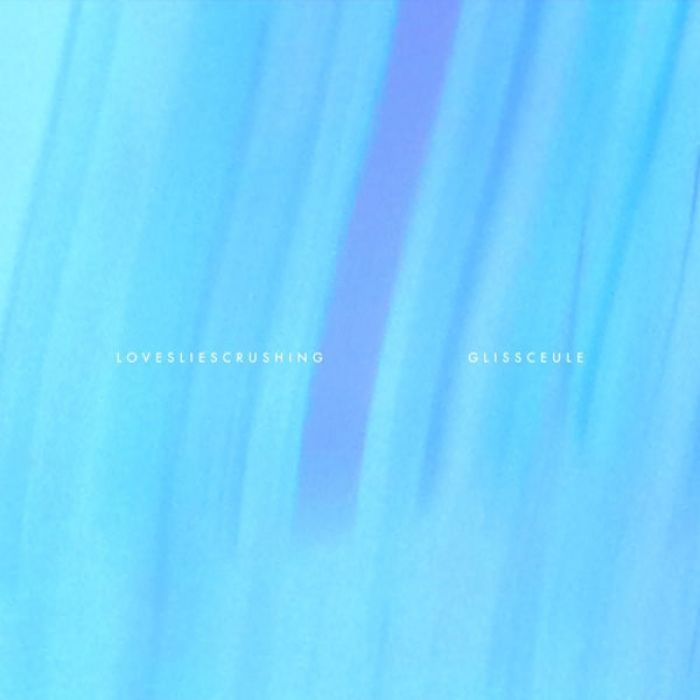Glissceule by lovesliescrushing (Review)

On the one hand, you could argue that the song titles on Glissceule are pretty pointless. There’s very little to differentiate the gauzy guitar and vocal interplay on “Ilgesn” from, say, the gauzy guitar and vocal interplay on “Ursec.” But on the other hand, the titles are probably the best way to describe the songs. You can use adjectives like “swooning,” “dreamy,” and “swirling” all day long when talking about Glissceule’s soundscapes. But when it comes down to it, titles like “Sov,” “Novsih,” and “Suischre” do a far better job of conveying Glissceule’s beauty than any “real” words. Hey, if it worked for Elizabeth Fraser…
But I realize that “Suischre“ ‘s still a less-than-concrete description of Glissceule, so how about this one. Imagine “Loomer” from My Bloody Valentine’s Loveless stretched out to its most abstract limits and then recorded onto a Tascam 4-track located in the holds of a boat slowly sinking into the Marianas Trench. Or Seefeel ditching the industrial rhythms of Quique for samples of background cosmic radiation and SETI recordings. Or Flying Saucer Attack trading in their pastoral feedback for the glittering wind of the Ross Ice Shelf. You see, that’s about as “Lling” as it gets.
It’s been a long time since we’ve heard from the duo of Scott Cortez and Melissa Arpin. 6 years in fact, since they released Xuvetyn. And after 6 years, Glissceule deviates very little from the sounds they produced on their Projekt recordings. Glissceule is as blissed-out as shoegazer can possibly get, consisting of nothing but nigh-endless layers of Cortez’ heavily processed guitars and Arpin’s angelic cooing inextricably intertwined.
Unlike past efforts, Glissceule also features some digital manipulation — Cortez always seemed to take great pride in the fact that his music was 100% analog — which might account for the glitch-like movements that sometimes sweep across songs like wind across a flag, snapping and contorting them before billowing out again.
It’s an 80 minute dance of glossolalia and guitars, the closest you can come to a soundtrack for the Northern Lights’ reflections dancing across new-fallen snow. And at nearly 80 minutes, Glissceule still never seems to get old. I’ve listened to this album countless times, and it still seems new to me. But much of that may be because the music is so blurred and surreal that there’s very little that sinks in. That’s not to say the music is shallow or pointless so much as to say that it’s intangible.
It’s like trying to grab smoke; it appears solid, but as soon as your hand comes in contact, the very motion of your hand causes it to scatter. It’s very much surface music, music that you simply let wash over you like ocean currents or the shifting shadows of clouds. Meanwhile, you try to come up with the right words for the experience. Come to think of it, “Eishglinl” might just have to suffice.